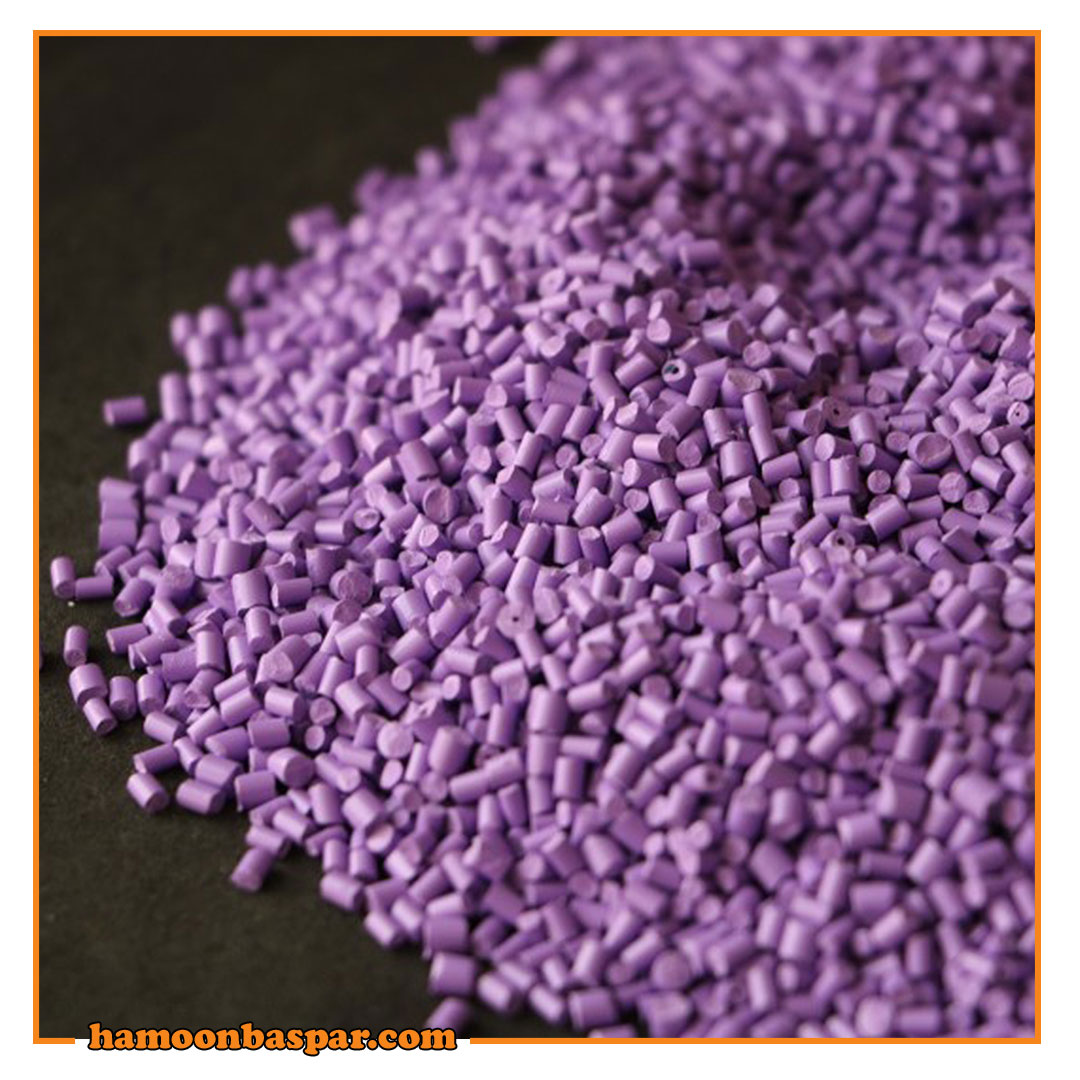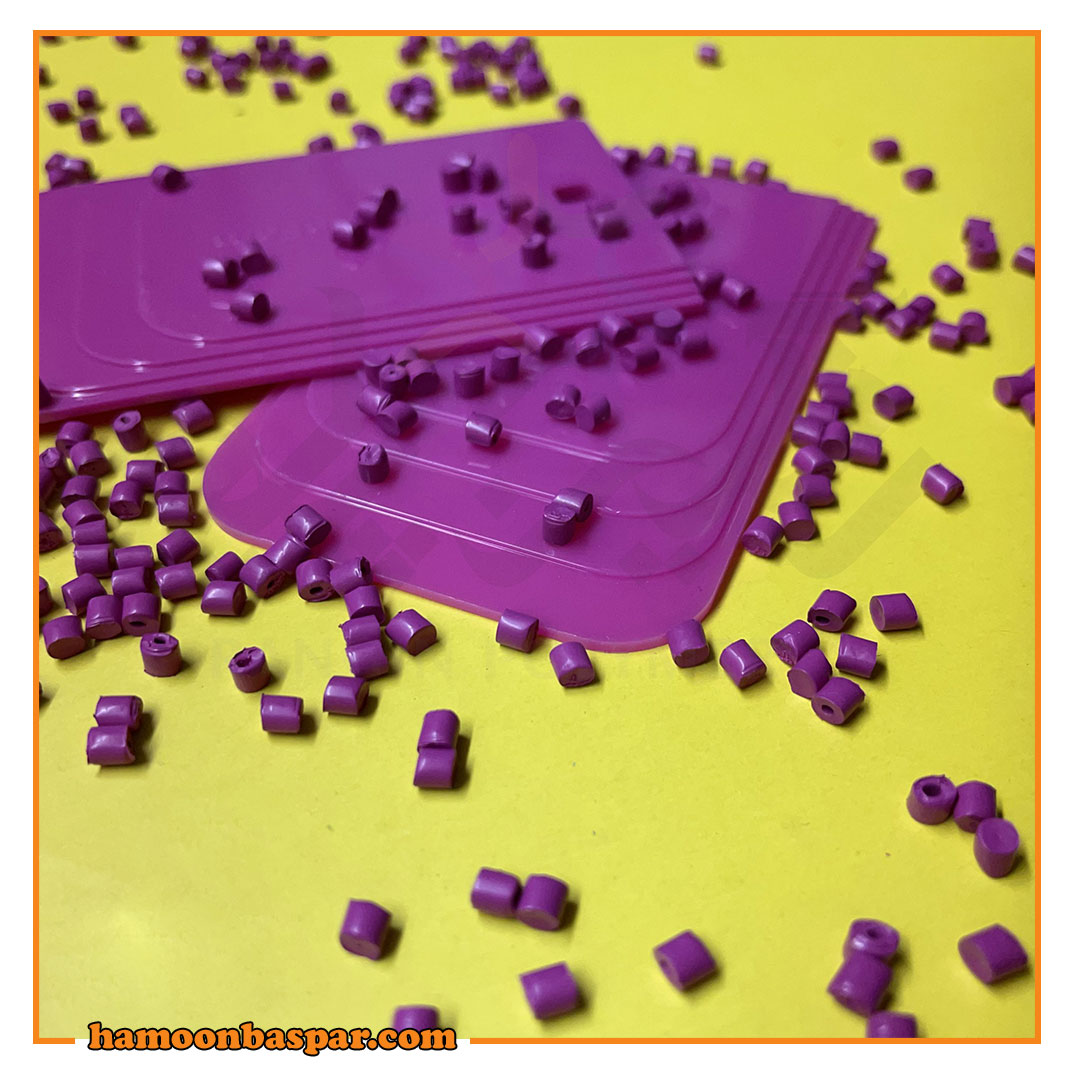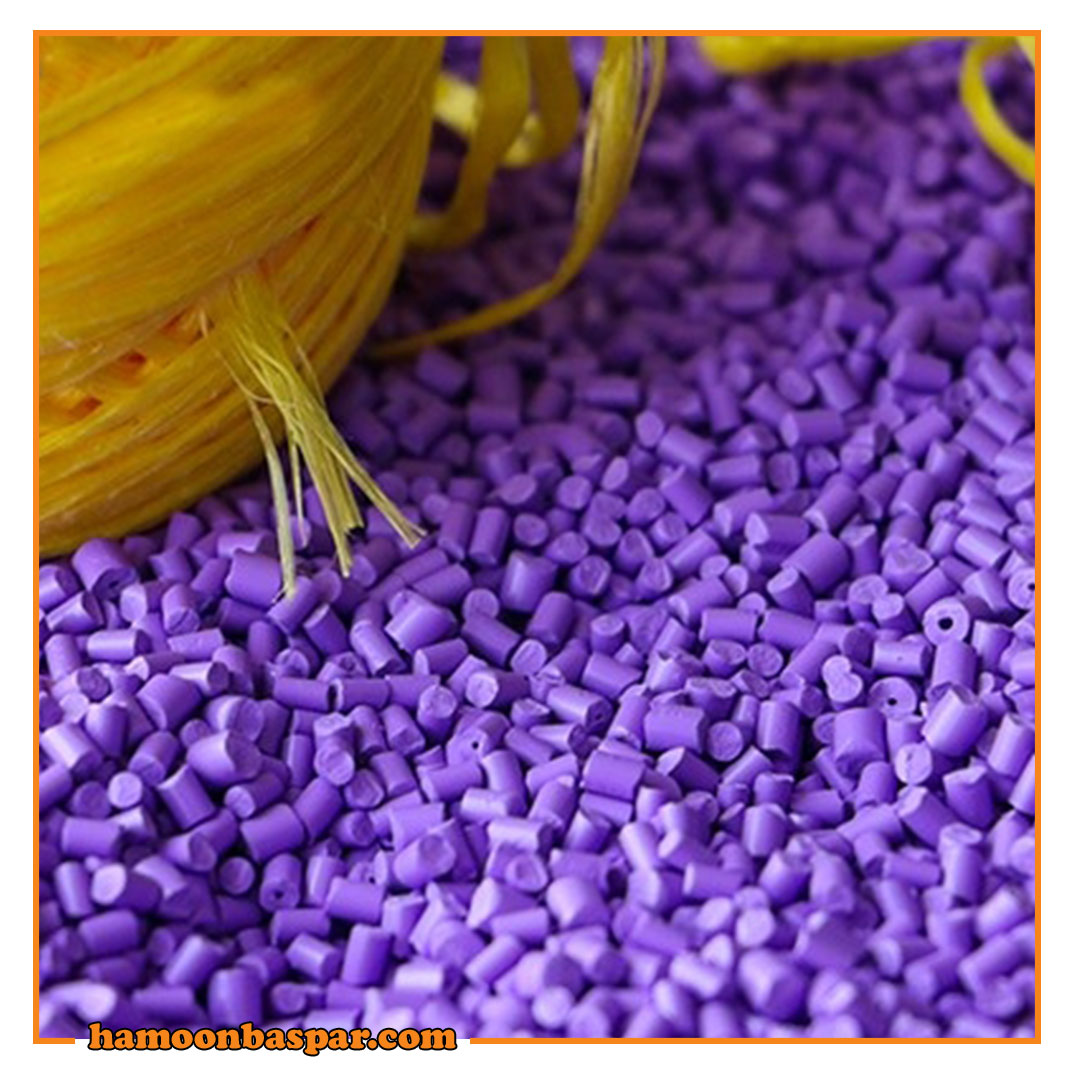Submit the purple masterbatch production video to us
Purple is a color that exudes luxury, royalty and sophistication. Not surprisingly, it is highly sought after in various industries such as packaging, automotive, and cosmetics. However, producing high-quality purple products is not as simple as mixing red and blue pigments. The production of purple masterbatch, like other types of colored masterbatch, requires a deep understanding of the science of color formulation, polymer compatibility and processing conditions. In this comprehensive guide, we’ll unlock the secrets to producing premium purple masterbatches that meet the needs of modern industrial applications. From choosing the right pigments to optimizing the extrusion process, we’ve got you covered. Whether you’re an experienced colorist or new to the field, this guide will equip you with the knowledge and skills you need to produce vibrant, consistent, and durable purple products that stand out in the marketplace. So, let’s take a look into the exciting world of purple masterbatch production!
High quality purple masterbatch production
Purple is a secondary color that is created from the combination of red and blue pigments. However, this simple approach may not always yield the desired purple shade, intensity, and consistency. This is because the color of a masterbatch is affected by various factors such as the type and concentration of pigments, the base polymer and processing conditions. To produce a high quality purple masterbatch, it is essential to understand the science behind the color formula and the interaction between pigments and polymers.
The first step in producing a purple masterbatch is choosing the right pigment. There are two types of pigments commonly used to produce purple masterbatches: organic and inorganic. Organic pigments are derived from carbon-based compounds and are suitable for producing bright and intense purple shades. On the other hand, mineral pigments are made of mineral compounds and have better stability in light and heat. The choice of pigment depends on the specific needs of the application such as resistance to weathering, migration and fading.
Once the pigments are selected, they must be evenly dispersed in the base polymer. This process involves mixing pigments with polymer resin and other additives such as stabilizers, lubricants and dispersants. The shade dispersion process determines the final consistency of the masterbatch. Poor dispersion can lead to uneven color distribution, streaking and poor processability. Therefore, it is very important to use high-quality dispersants and processing equipment that can achieve uniform and stable dispersion. We have also explained this process in the production of red masterbatch.
The importance of using quality purple masterbatch in industrial applications
A product’s color can significantly affect its perceived value, attractiveness, and brand recognition. Purple is especially associated with luxury, uniqueness and creativity. Therefore, the use of high-quality purple masterbatch can enhance the aesthetic and functional properties of industrial products such as packaging, auto parts, and cosmetic containers.
In addition to the visual aspect, purple masterbatch can also improve the performance and durability of products. For example, purple masterbatch can provide UV protection, reduce friction and wear, and increase the mechanical strength of polymers. In addition, using a high-quality purple masterbatch can reduce production costs and waste by minimizing the need for additional colors, rework, and waste.
However, using low-quality or inconsistent purple masterbatch can have adverse effects on product quality and performance. An unstable or poorly dispersed masterbatch can cause defects such as color bleeding, fading, and discoloration. In addition, some pigments may react with the polymer matrix and cause degradation, brittleness or even failure of the product. Therefore, it is very important to select the right purple masterbatch that meets the specific requirements of the application and undergoes rigorous testing and quality control measures.
Factors affecting the performance of purple masterbatch
Purple masterbatch performance depends on various factors such as pigment selection, base polymer, processing conditions and application requirements. Understanding these factors can help to optimize the production process and achieve the desired performance and quality of the masterbatch.
One of the important factors affecting the performance of purple masterbatch is the type and concentration of pigments. As mentioned earlier, organic and inorganic pigments have different properties and performance characteristics. Organic pigments provide bright, vivid colors, but are less stable and may migrate or fade over time. Inorganic pigments, on the other hand, offer better light and heat stability, but may not provide the same intensity and brightness as organic pigments. Pigment concentration also affects masterbatch performance, as too much or too little pigment can cause color variations, processing problems, and quality problems.
The base polymer is another important factor that affects the performance of the purple masterbatch. Different polymers have different properties such as melting temperature, viscosity and chemical resistance. The choice of polymer depends on the specific needs of the application such as flexibility, strength and durability. To achieve a stable and homogeneous masterbatch, it is necessary to choose a polymer that is compatible with pigments and processing conditions.
Processing conditions such as temperature, pressure and residence time also affect the performance of purple masterbatch. Improper processing can cause degradation, discoloration or poor dispersion of pigments. Therefore, optimizing the processing parameters is very important to achieve the desired performance and quality of the masterbatch.
Choosing the right purple masterbatch
Choosing the right purple masterbatch for your application depends on various factors such as polymer type, processing method, color requirements and performance criteria. Here are some factors to choose a purple masterbatch:
Polymer Type: Different polymers have different properties and performance requirements. It is essential to select a masterbatch that is compatible with the specific polymer used in the application.
Processing method: The processing method such as extrusion, injection molding or blow molding can affect the quality and performance of the masterbatch. Choosing a masterbatch compatible with the processing method is essential to achieve optimal results.
Required color: The shade, intensity and consistency of the desired color depends on the specific application. It is essential to choose a masterbatch that can achieve the desired color properties.
Performance Criteria: Performance requirements, such as mechanical strength, UV resistance, and chemical resistance, depend on the specific application. It is essential to select a masterbatch that meets performance criteria and undergoes rigorous testing and quality control measures.
Common industrial applications of purple masterbatch
Purple Masterbatch is used in various industrial applications such as packaging, automotive, cosmetics and household products. Here are some common uses of purple masterbatch:
packing
Purple masterbatch is used in product packaging such as bottles, containers and films to increase their visual appeal and brand recognition. Purple packaging is usually used for luxury and expensive products such as perfume, cosmetics and wine.
car
Purple masterbatch is used in car parts such as dashboards, decorations and seat covers to add a unique and distinctive effect to the interior design. Purple color is also used in exterior parts like bumpers and spoilers to increase the attractiveness and visibility.
Cosmetic
Purple Masterbatch is used in cosmetic packaging such as lipstick tubes, compacts and jars to create a luxurious and sophisticated look. Purple is also used in cosmetic formulations such as eye shadows and nail polishes to add color and creativity.
Homemade
Purple Masterbatch is used in home products such as appliances, furniture and toys to add a playful and vibrant feel to the design. Purple is also used in textiles such as curtains and carpets to create a cozy and stylish atmosphere.
Testing and quality control measures for purple masterbatch
Testing and quality control measures are critical to ensure the performance and consistency of Purple Masterbatch. Here are some common tests and quality control measures for purple masterbatch:
Colorimetric
Colorimetry is a technique used to measure the color characteristics of a sample such as hue, saturation, and brightness. Colorimetry can help ensure masterbatch color consistency and accuracy.
Spectrophotometry
Spectrophotometry is a technique used to measure the spectral properties of a sample such as absorption and reflectance. Spectrophotometry can help identify the type and concentration of pigments in the masterbatch.
Rheology
Rheology is a technique used to measure the flow and deformation properties of a sample. Rheology can help optimize processing conditions and ensure masterbatch quality and performance.
Heat and light stability
The heat and light stability test is performed to evaluate the resistance of the masterbatch to exposure to heat and light. This test can help ensure the durability and longevity of the masterbatch.
The best way to move and store purple masterbatch
Proper handling and storage of the purple masterbatch is necessary to maintain the quality and performance of the masterbatch. Here are some of the best ways to care for and maintain purple masterbatch:
Store Masterbatch in a dry and cool place away from sunlight and moisture.
When working with masterbatch, use clean and dry equipment to avoid contamination and destruction.
Store masterbatch in sealed containers or bags to prevent exposure to air and moisture.
Label containers or masterbatch bags with batch number, production date and other relevant information for tracking and quality control.
Environmental considerations for purple masterbatch production
Sustainability and environmental considerations are becoming increasingly important in the production of industrial products, including Masterbatch. Here are some sustainability and environmental considerations for purple masterbatch production:
Use environmentally friendly pigments and additives that are free of harmful chemicals and heavy metals.
Reducing waste and carbon footprint by optimizing the production process and minimizing the use of energy and resources.
Promote recycling and the circular economy by using recycled materials and designing products for easy separation and reuse.
Follow environmental regulations and standards to ensure the safety and sustainability of the production process and products.
Of course, besides the purple masterbatch, you will also need other types of masterbatch, including the white masterbatch. You can refer to Hamon Bespar for production and purchase orders.
Conclusion: The future of purple masterbatch in industrial applications
Masterbatch purple is a versatile and attractive color that can enhance the visual and functional properties of industrial products. Producing high-quality purple masterbatches requires a deep understanding of dye formulation, polymer compatibility, and processing conditions. By selecting the right pigments, optimizing processing parameters, and performing rigorous testing and quality control measures, a vibrant, consistent, and durable purple masterbatch can be produced that meets the needs of modern industrial applications. As sustainability and environmental considerations become more critical, it is imperative to adopt environmentally friendly and responsible practices in the production of purple masterbatch. The future of Purple Masterbatch in industrial applications is bright and colorful and we hope this comprehensive guide has equipped you with the knowledge and skills to unlock its full potential.






No views